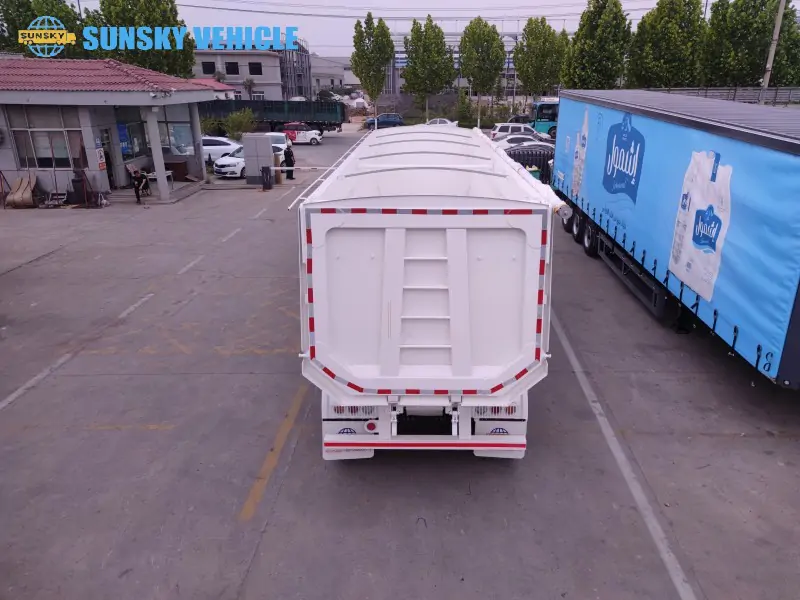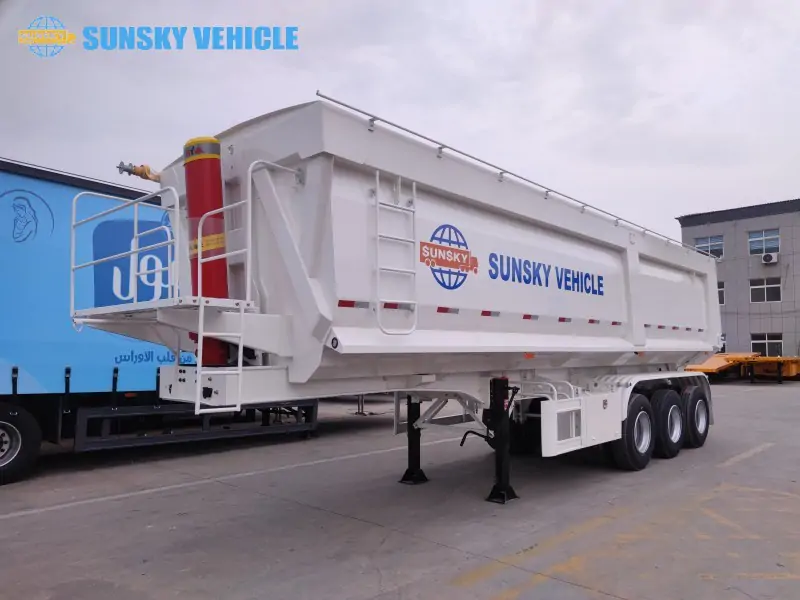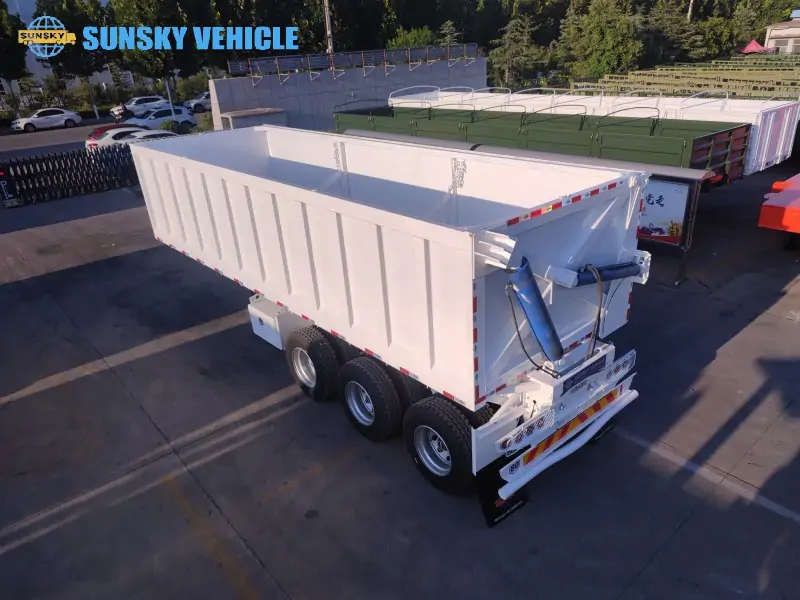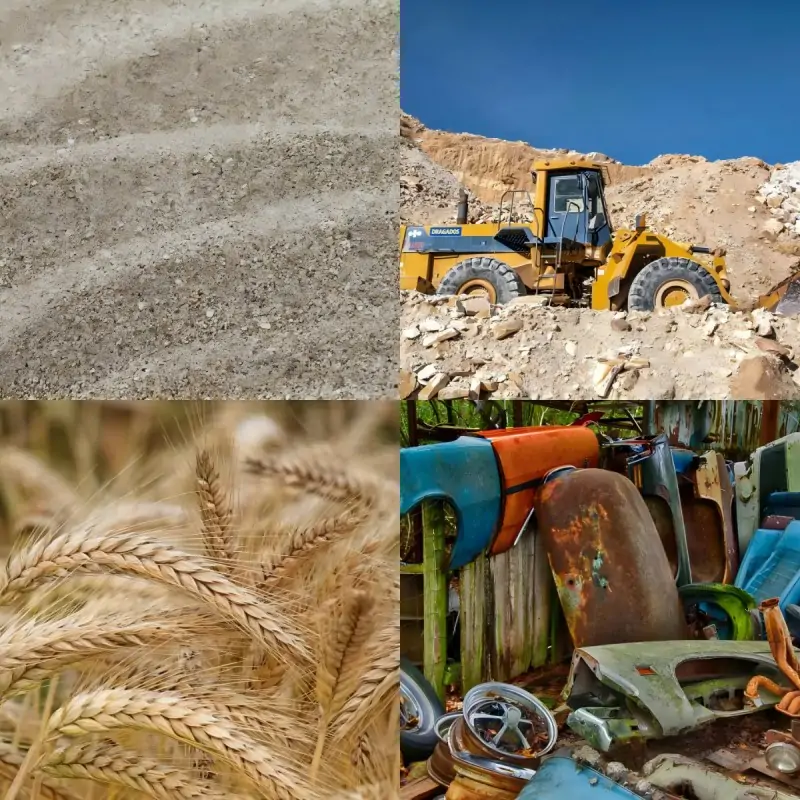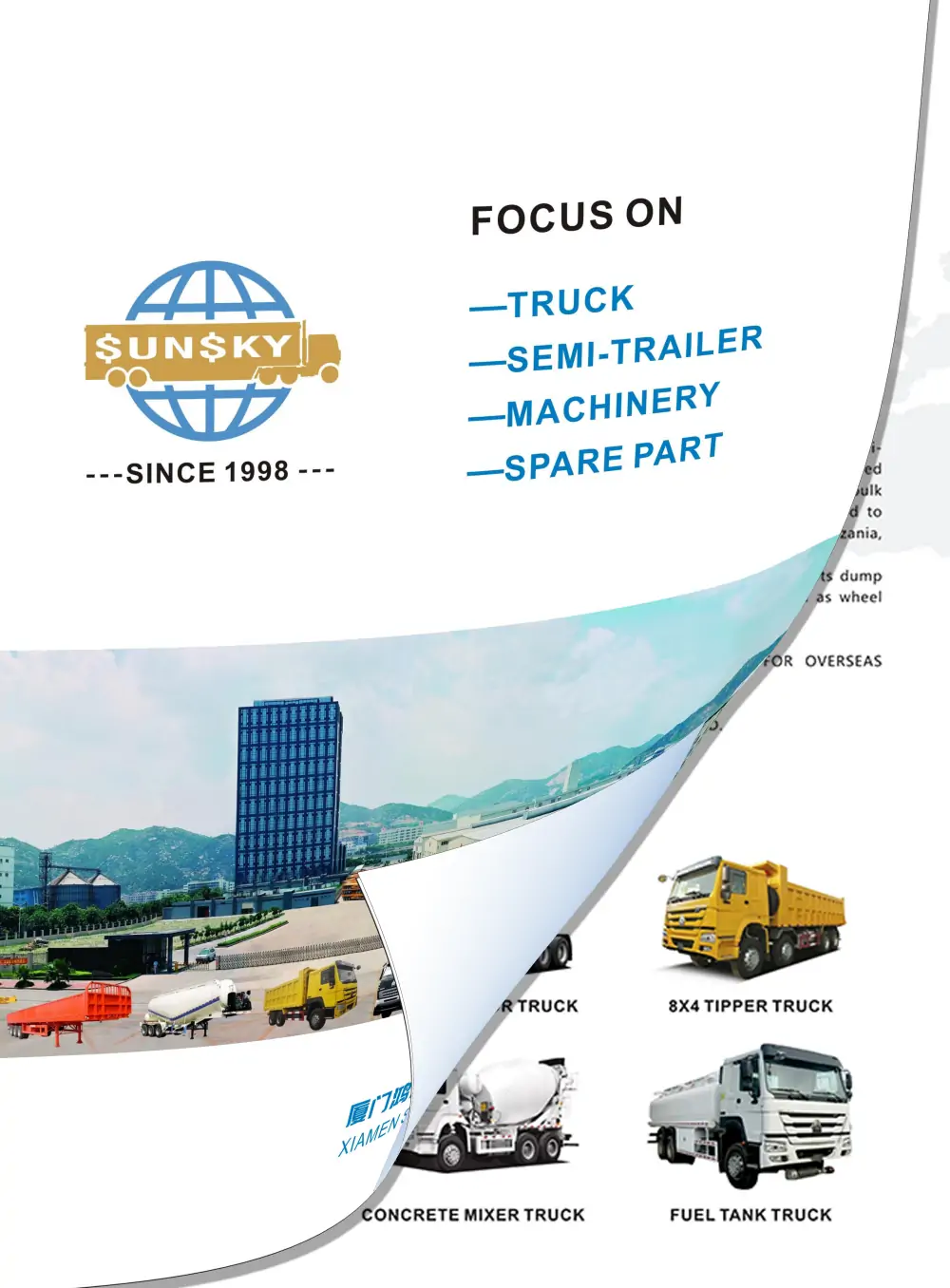What Is a Dump Trailer: Everything You Need to Know
Meta: A comprehensive guide to dump trailers — definition, how they work, types, buying tips, maintenance, costs, and local considerations for Africa, the Middle East & Southeast Asia.
Introduction
In regions where construction, agriculture, mining, and infrastructure projects are expanding rapidly — such as Africa, the Middle East, and Southeast Asia — efficient material transport matters. From hauling sand and gravel to moving demolition debris, soil, crops or stones, businesses need equipment that can handle heavy loads safely and quickly. Enter the dump trailer.
A dump trailer is a versatile hauling solution that uses a hydraulic lifting system to tilt the bed and unload bulk materials fast. Compared with standard flatbeds or cargo trailers, dump trailers reduce labor, speed job cycles, and improve site productivity — essential when manpower, fuel and downtime carry real costs.
This guide will take you from zero to confident: what a dump trailer is, how it works, which types suit which jobs, and how to pick, operate and maintain units for real-world projects in Africa, the Middle East and Southeast Asia.
What Is a Dump Trailer?
A dump trailer is a specialized trailer designed to haul and self-unload bulk materials using a hydraulic lifting mechanism. Unlike flatbed or cargo trailers that require manual unloading or external machinery, a dump trailer lifts its bed so materials slide out quickly and safely.
Core parts
- Trailer bed / box — the container that holds the load
- Hydraulic system — pump, fluid and cylinder(s) that raise the bed
- Frame & axles — support structure and connection to towing vehicle
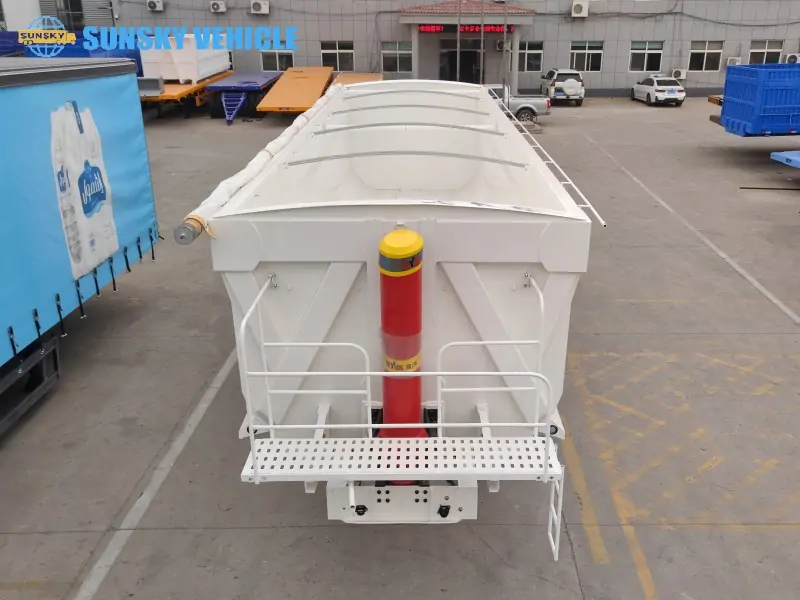
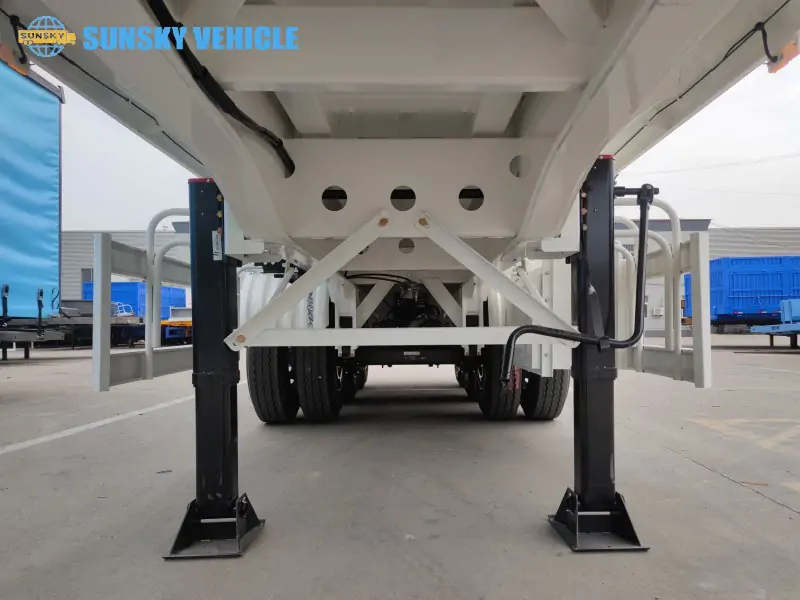
Key differences vs flatbed / cargo trailers
| Feature | Dump Trailer | Flatbed / Cargo Trailer |
|---|---|---|
| Unloading method | Hydraulic self-dump | Manual, forklift or crane |
| Payload type | Loose bulk: sand, gravel, soil, debris | Pallets, machinery, boxed goods |
| Typical use | Construction, agriculture, waste, mining | General transport |
How a Dump Trailer Works
Hydraulic system overview
The hydraulic system is the operational heart of a dump trailer. Main elements:
- Hydraulic fluid — transfers pressure, lubricates and dampens
- Pump — generates pressure (electric motor, PTO or onboard engine)
- Cylinder / ram — extends to lift the bed (telescopic or single/dual ram)
- Control valve — directs fluid to raise or lower the bed
Operator input (switch, lever or remote) drives the pump, pressurizes fluid and extends the cylinder to tilt the bed so the load discharges.
Pivot point, dump angle & load mechanics
The bed rotates around a pivot (hinge) near the rear or side of the trailer. Typical dump angles are 35°–55° — enough to allow sticky or wet material to flow. Proper load distribution and a robust pivot are essential to avoid undue frame stress or tipping.
Controlled lowering & safety mechanisms
- Slow-release / flow control valve — controls descent speed for safety
- Safety locks / mechanical stops — prevent sudden drops if hydraulics fail
- Pressure relief valves — protect the system from overpressure
- Emergency stop — for immediate shutdown during unsafe conditions
In hot, dusty climates common in many parts of Africa and the Middle East, choose sealed fittings, dust-protected control valves and high-temperature hydraulic fluid to avoid premature failure.
Types / Configurations of Dump Trailers
Different dump trailer configurations match specific materials, site constraints and operational priorities.
End Dump (Rear Dump)
How it works: Bed lifts from the front and empties out the rear.
Advantages: Simple, handles heavy coarse materials. Disadvantages: Needs stable ground when raised.
Best for: Road construction, landscaping, demolition, mining.
Side Dump
How it works: Bed tilts to one side to discharge load.
Advantages: Lower tipping risk on uneven ground, faster cycles for some jobs. Disadvantages: More complex and usually costlier.
Best for: Urban construction, roadside works and uneven terrain.
Belly (Bottom) Dump
How it works: Material exits through a gate under the trailer; no lifting required.
Advantages: Good for even spreading of aggregates. Disadvantages: Not suitable for sticky or wet materials.
Best for: Road surfacing, ballast spreading and highway works.
Transfer Dump
How it works: Uses an additional detachable box to increase total volume while keeping axle loads legal.
Advantages: Large volume, efficient multiple-site delivery. Disadvantages: More moving parts and maintenance.
Best for: Quarry hauling, bulk material transport.
Live Floor / Moving Floor / Conveyor Dump
How it works: A moving floor (hydraulic or chain-driven) pushes material out horizontally instead of tipping.
Advantages: Ideal for low-clearance unloads and materials that must not be tipped. Disadvantages: Expensive, complex, not for very dense stone.
Best for: Organic waste, packaged goods, recycling and lighter debris.
Robust and Durable, Achieve Exceptional Transport
Start your project today and get a high-performance semi-trailer solution tailored specifically to your unique needs.
Key Components & Materials
Trailer Body: Steel vs Aluminum vs Alloy
Steel — strongest, easiest to repair, more affordable; heavier and more prone to rust without coating.
Aluminum — lightweight and corrosion resistant, giving higher payload-to-weight ratio; costs more and can dent under heavy impact.
Alloy / Hybrid — balances weight, corrosion resistance and strength; often used for mixed-use fleets.
Hydraulic System Components
- Pump — electric, PTO or dedicated engine-driven
- Cylinders — telescopic or single/dual ram
- Hoses & fittings — high-pressure rated; protect against abrasion
- Filters — keep fluid clean; critical in dusty climates
Axles, Suspension, Tires & Brakes
Choose axle count (single/tandem/triple) and suspension (leaf spring, torsion, or air-ride) based on GVWR and terrain. Tires should be rated for weight and puncture resistance on unpaved roads; braking systems (electric vs air) must meet local regulations.
Hitch, Frame & Anti-Corrosion
Hitch type (pintle, ball, gooseneck) must match tow vehicles. Heavy-gauge frames and professional welds increase longevity. Use powder-coating, galvanization or epoxy paints to fight rust — especially in coastal or humid regions.
Dump Trailer vs Dump Truck: When to Choose Which
The decision depends on budget, hauling frequency, terrain, fuel costs and maintenance capacity.
Cost
Dump trailer: Lower upfront cost. Can be used with existing tow vehicles.
Dump truck: Higher purchase cost; dedicated vehicle and higher registration/insurance expenses.
Flexibility
Trailers attach to multiple vehicles and can be detached for other uses. Trucks are integrated and less flexible if out of service.
Maintenance & Repairs
Trailers are generally simpler — fewer integrated systems to service. Trucks combine chassis, engine and hydraulic systems, increasing repair complexity and downtime.
Fuel & Operation
Trailers rely on the tow vehicle, often lighter overall and more fuel-efficient per payload for long hauls. Trucks can be faster in short-cycle, high-turnover sites.
Terrain & Road Conditions
Off-road or mixed-terrain operations often favor robust trailer setups paired with tractors or 4×4 trucks. Urban or short-haul sites sometimes favor dedicated dump trucks.
Bottom line: For growing contractors, small fleets and mixed-use operations in Africa / Middle East / SE Asia, dump trailers usually offer better flexibility and lower operating cost. Choose dump trucks for dedicated, high-frequency short-haul contracts.
Popular Uses & Industry Applications
- Construction & Infrastructure: Sand, gravel, concrete debris, road base
- Civil & Bridge Works: Foundation fill, aggregate, pre-cast elements
- Agriculture & Farming: Grain, fertilizer, biomass, manure
- Mining & Quarrying: Stone, ore, aggregates
- Municipal & Waste Management: Demolition waste, green waste, recycling loads
- Small Business / Private Use: Yard renovation, small-scale hauling
What Materials Can Be Hauled / Dumped
Dump trailers handle many materials — but each has attributes that affect trailer selection and maintenance: density, abrasiveness, and corrosiveness.
| Material | Density | Abrasiveness | Corrosiveness | Recommended bed |
|---|---|---|---|---|
| Soil / Clay | Medium | Low | Low | Standard steel |
| Sand / Gravel | Medium–High | High | Low | Reinforced steel |
| Concrete rubble | High | Very high | Low | Thick steel plate |
| Ash / Fine powders | Medium | Low | Can be corrosive | Coated steel / alloy |
| Organic waste / Biomass | Light–Medium | Low | Medium (moisture) | Aluminum or anti-corrosion steel |
| Agricultural goods | Light–Medium | Low | Variable | Steel or aluminum |
Selecting the right bed material and coating reduces downtime from wear and corrosion — a major consideration in humid coastal zones and in areas with high dust.
Buying Considerations & Selection Guide
Type, size & material — match to need
Choose trailer configuration by material and site constraints (end dump for heavy rock, live floor for low-clearance or packaged loads). Size and GVWR must match the towing vehicle and legal limits in your country.
Hydraulic / lifting system
Decide on cylinder type (telescopic for high lift, scissor for compact), pump source (electric vs PTO), and essential safety features (flow control, pressure relief, mechanical lock).
Brand, supplier & service network
In regions with limited spare parts availability, prioritize suppliers with local presence, stock of common parts and trained technicians.
Key selling points
- Anti-corrosion finishes (galvanized, powder coat)
- Easy-access service points and modular parts
- Replaceable wear plates, standardized hoses and fittings
New vs used — pros and cons
New: Warranty, modern features, customization.
Used: Lower cost but inspect for hydraulic leaks, frame cracks, axle wear and wheel bearings.
Robust and Durable, Achieve Exceptional Transport
Start your project today and get a high-performance semi-trailer solution tailored specifically to your unique needs.
Maintenance & Safety Tips
Regular inspections
- Check tires for wear and proper inflation
- Test brakes and inspect pads/drums/discs
- Inspect hydraulic hoses, fittings and oil level
- Check hitch and coupling security
- Examine frame, welds and bed for cracks or corrosion
Lubrication, cleaning & corrosion control
Grease pivots, clean the bed after each job to remove abrasive debris, and touch up protective coatings to reduce rust — especially near coasts or in humid climates.
Safe operating practices
- Always unload on level ground
- Confirm no people, obstacles or overhead lines are in the dumping zone
- Raise and lower the bed slowly; use safety locks before maintenance
- Load evenly to avoid shifting weight
Training & procedures
Implement checklists for daily/weekly inspections, provide practical training for operators and establish emergency protocols for hydraulic failure or tip-over events.
Frequently Asked Questions
1. What is the difference between a dump trailer and a dump truck?
A dump trailer is towed and detachable — cheaper, flexible and easier to maintain. A dump truck is an integrated vehicle — faster for short cycles but more expensive to buy and operate.
2. How much does a dump trailer cost?
Price ranges widely by size and spec:
Small/light-duty: ~US$3,000–7,000; medium-duty: ~US$8,000–15,000; heavy/specialized: US$15,000–30,000+. Import duties, shipping and local taxes can significantly affect final cost in Africa, the Middle East and Southeast Asia.
3. What size dump trailer do I need?
Base your choice on material density, towing vehicle capacity, local road limits and site constraints. Common platform sizes include 7×14, 7×16 and 8×20 ft; GVWR ranges vary — always verify local regulations.
4. Can I haul concrete with a dump trailer?
Yes — but ensure the bed and hydraulics are rated for the weight, use reinforced steel beds, and clean immediately after use to avoid adhesion and corrosion.
5. How often should I service the hydraulic system?
Basic schedule: daily checks (oil level, hoses), monthly inspections (filters, leaks), annual service (fluid change, pump & cylinder inspection). Increase frequency in dusty or hot climates.
Conclusion
Dump trailers deliver practical, cost-effective solutions for moving and unloading bulk materials — and they are especially valuable in markets with variable infrastructure like Africa, the Middle East, and Southeast Asia. By selecting the right type, size, materials and hydraulic system — and by prioritizing supplier support and maintenance — you reduce downtime, improve productivity and protect your investment.
Next steps:
- Explore our dump trailer models — compare sizes and specs
Ready to choose a trailer? Contact a SUNSKY VEHICLE to get a customized quote and model recommendation for your project and region.
Robust and Durable, Achieve Exceptional Transport
Start your project today and get a high-performance semi-trailer solution tailored specifically to your unique needs.

